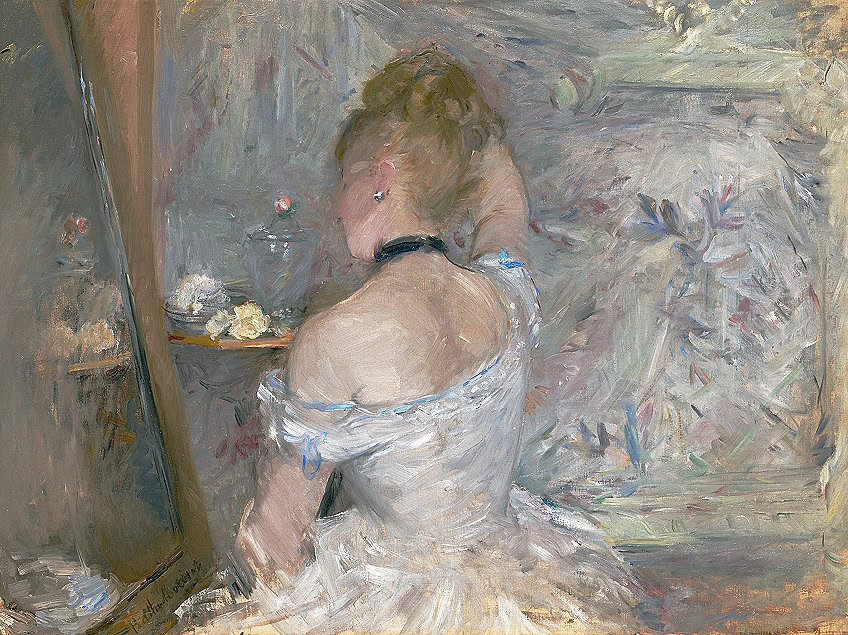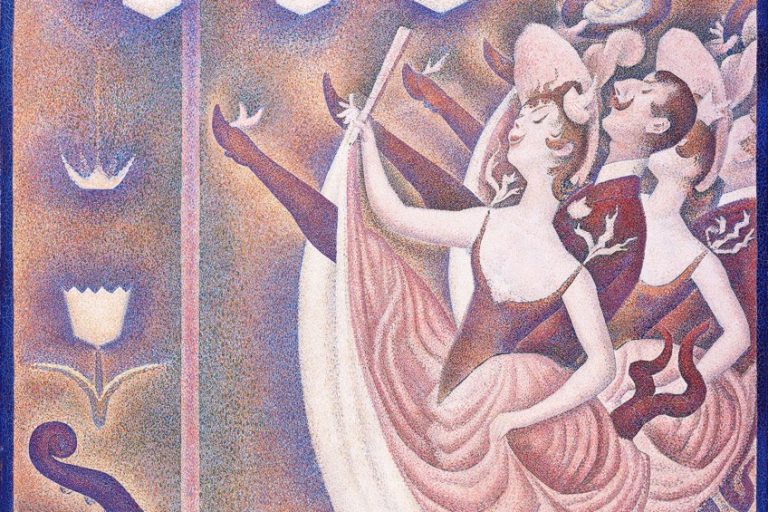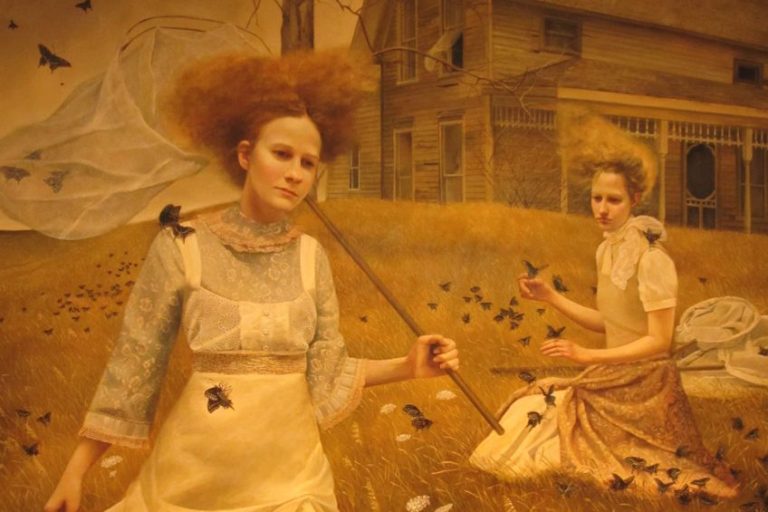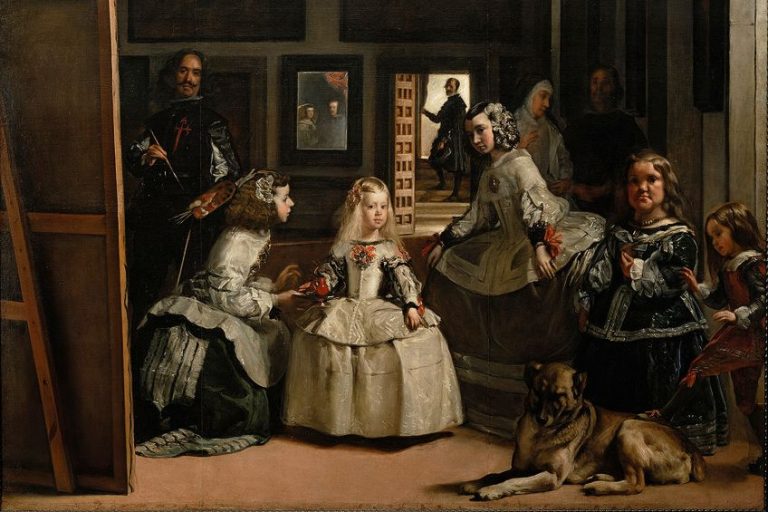Berthe Morisot – A Woman of Influence
Berthe Morisot, a pivotal figure in Impressionist art, defied the societal norms of her time to become one of the leading female painters of the 19th century. Born in 1841 into an affluent family, Morisot’s talent and determination led her to break barriers in the male-dominated art world. Her distinctive style, characterized by delicate brushwork and luminous depictions of domestic scenes and landscapes, earned her recognition alongside artists like Monet and Renoir. Through her innovative approach and contributions to the Impressionist movement, Morisot’s legacy continues to inspire generations of artists and admirers worldwide.
Key Takeaways
- Berthe Morisot was a key figure in the French Impressionism movement, overcoming gender barriers of her time.
- She infused the Impressionist style with her perspective on domestic life and intimate settings.
- Morisot’s legacy continues to influence modern perspectives on the contributions of female artists within historically male-dominated movements.
Early Life and Education
| Birth | January 14, 1841 |
| Death | March 2, 1895 |
| Place of Birth | Bourges, Cher, France |
| Genre of Work | Impressionism movement |
Berthe Morisot was a prominent French painter who carved a distinctive niche within the Impressionism movement, an art movement known for its innovative depiction of light and emphasis on the immediacy of the moment. Born in Bourges, France, on January 14, 1841, Morisot grew up in a cultured family that encouraged her artistic pursuits. Despite the constraints faced by women in the arts during the nineteenth century, she pursued her passion with determination, joining the ranks of the groundbreaking Impressionists, a group that sought to break away from the traditional approach to painting that was represented by the Salon de Paris.

Her work was regularly exhibited with her fellow Impressionists; a circle of Parisian painters that included iconic figures like Monet and Renoir. Morisot distinguished herself not only by her gender in the male-dominated art world but also by the delicate renderings of domestic life and intimate portraits in her oeuvre.
Marrying Eugène Manet, the brother of renowned painter Édouard Manet, she became an integral part of the artistic avant-garde of her time.
Early Training and Work
Originally under the tutelage of Joseph Guichard, Berthe and her sister Edma received early artistic training, which was unusual for women of their social standing. They were introduced to the Louvre, where they practiced copying masterworks. This exposure laid the foundation for Morisot’s future work. By 1862, she started studying under Jean-Baptiste-Camille Corot, a pivotal figure in landscape painting who notably influenced her style and steered her towards plein-air painting—a hallmark of Impressionism.

Mature Period
Morisot’s mature period was defined by a series of exhibitions at the esteemed Salon, beginning in 1864. Her refusal to conform to traditional expectations created pathways for other female artists of the time. She met Édouard Manet in 1868, who deeply influenced her work, and the two developed a profound professional relationship.
Morisot’s work evolved under Manet’s impact, exemplifying the Impressionist focus on light, shadow, and the essence of modern life.
Late Period
During Morisot’s late period, her style culminated in a mature reflection of her life’s experiences. Despite not being formally recognized by the Académie des Beaux-Arts due to gender biases of the time, Morisot’s late works stood as a testament to her resilience and impact on the art world. Her canvases from this time embody the essence of Impressionism, with swift brushstrokes and a luminous palette.

Career and Artistic Development
Berthe Morisot’s artistic journey was marked by her early introduction to the Salon de Paris, her pivotal role among the Impressionists, and the evolution of her distinctive style that adeptly encompassed oil painting and watercolor with a focus on figure painting.
First Exhibitions and Salon Participation
Berthe Morisot, an influential French painter, was initially introduced into the art world through the prestigious Salon de Paris. With unwavering commitment, she gained acceptance to the Salon in 1864. Her art, characterized by its delicate brushwork and subtle interplay of light, was exhibited at the Salon until 1874. The Salon was the official, annual exhibition of the Académie des Beaux-Arts and was crucial for artists seeking public recognition and critical acclaim.

Association With the Impressionists
Morisot’s involvement with the Impressionists began in earnest when she established close ties with key figures such as Édouard Manet, whose influence was pivotal to her career. Morisot married Manet’s brother, Eugène, further solidifying her position in their circle. She exhibited her work in the first Impressionist Exhibition in 1874 and would continue to be a central figure in this avant-garde movement, exhibiting with them regularly alongside Edgar Degas, Claude Monet, Pierre-Auguste Renoir, Alfred Sisley, Mary Cassatt, Camille Pissarro, and Marie Bracquemond.
Morisot was not just a participant but an integral part of the movement’s struggle for recognition.
Development of Signature Style
True to the ethos of the Impressionists, Morisot developed her signature style that embraced en plein air painting, a technique involving painting outdoors to capture the transient effects of light and color. Her brushwork grew looser and more confident, infusing her subjects with a sense of life and immediacy. She explored various media with dexterity, but it was her oil paintings and watercolors that solidified her status. Morisot’s work remains a testament to her influences and her innovative contributions to the world of art.

Major Works and Themes
Berthe Morisot’s oeuvre reflects her Impressionist roots, highlighting domestic scenes, landscapes, and portraits with a focus on the experiences of women. Her work is celebrated for its delicate brushwork and the intimate moments it captured.
Portraits and Landscapes
Morisot’s landscapes merged the traditional with the Impressionist, often depicting the world through a screen of foliage or the domestic sphere viewed from a window. The Harbor at Lorient (1869) is exemplary, offering a view of a seascape that balances both genres. The Cherry Tree (1891) features Morisot’s characteristic light touch and airy palette, capturing the ephemeral quality of light.

Domestic Life and Family
Morisot took the private sphere, particularly that of women and children, and made it the subject of her paintings. Her work, The Cradle (1872), where she lovingly portrays a mother gazing at her sleeping child, underscores the intimate theme of motherhood.
The Sisters (1869) highlights the comfort of familial bonds.
Representation of Women
With a strong emphasis on feminine grace, Morisot challenged gender expectations through her subject matter. Reading (1873) and Woman at Her Toilette (1875 – 1880) are prime examples that underscore her commitment to representing real women’s lives. Notably, her depictions often shied away from idealization, presenting her subjects with an authentic human presence that acknowledged the multi-faceted experiences of women of her time. Morisot, paving the way for female artists, became a role model by not only capturing women on canvas but also by asserting her place among the Impressionists as a formidable artist herself.

Artistic Accomplishments by Berthe Morisot
Berthe Morisot, a leading figure in the Impressionist movement, mastered the art of oil painting and printmaking. Despite societal pressures, she forged a path that led her to exhibit alongside her male counterparts. In 1874, Morisot made history by joining the Salon de Paris, an esteemed artistic event of the era. Her works stand out for their delicate brushwork and light color palette. Notable paintings include The Cradle (1872), showcasing her ability to capture intimate moments with nuanced emotion.
She became celebrated for her portraits that often featured women in domestic settings.
In addition to The Cradle (1872), selected major works of Morisot include Reading (1873), and Hanging the Laundry out to Dry (1875). Morisot had a profound influence on the Impressionist genre. In 1894, critic Gustave Geffroy named her one of “les trois grandes dames” of Impressionism, a testimony to her formidable presence in a male-dominated sphere.

Her constant participation in the Impressionist exhibits, from their inception through subsequent years, underlines her dedication and impact. Morisot’s work achieved both critical acclaim and substantial influence within the movement, solidifying her legacy as a pioneering woman in the world of 19th-century art. Her paintings continue to resonate, reflecting her confident approach to composition and subject matter.
Legacy and Influence of Berthe Morisot
Berthe Morisot’s contributions to art resonate through her pioneering role in the Impressionism movement. As a female artist, she challenged the conventional roles assigned to women in her era, creating an oeuvre marked by its style and embrace of avant-garde principles. Her oil paintings often featured loose brushstrokes and a soft palette, capturing light and movement in a way that was innovative for her time. The Musée d’Orsay and the Louvre Gallery include Morisot’s works in their collections, validating her as an integral part of art history.
Morisot’s pieces are often seen alongside works by Rococo painters, illustrating a narrative of evolving artistic styles.
Morisot’s oil paintings contributed to defining the Impressionist aesthetic, as she employed a distinctive use of color and light, a technique that likely influenced the transition to Post-Impressionism. Morisot broke boundaries in a male-dominated field, providing guidance and influence for subsequent generations of female artists. Her Self-Portrait and Portrait of Berthe Morisot with a Fan challenged traditional notions of femininity and artistic authority.

Morisot’s approach to light and shadow has been compared to the qualities of photography, showing her work’s relevance to multiple forms of visual arts. As an early adopter of new ideas and forms, she was not only part of the avant-garde in painting but also anticipated trends that would become central in visual arts. Berthe Morisot’s legacy is evident in her impact on Impressionism and gender norms in the arts. She paved the way for women in the art world and left a lasting influence on the style and technique of future art movements.
Berthe Morisot’s impact on the art world extends far beyond her lifetime. Her pioneering spirit as a female artist in the male-dominated 19th-century art scene, coupled with her unique Impressionist style, has left an indelible mark on art history. Through her intimate portrayals of everyday life and her mastery of light and color, Morisot not only contributed significantly to the Impressionist movement but also paved the way for future generations of female artists. Her legacy serves as a testament to the enduring power of art to challenge norms, inspire change, and captivate the imagination across generations.
Frequently Asked Questions
What Is Berthe Morisot Recognized for in the Art World?
She is renowned as a key figure in the Impressionist movement and was known for her delicate brushwork and innovative approach to capturing light. Her works were regularly exhibited with her Impressionist peers, solidifying her place in art history.
What Led to Berthe Morisot’s Death?
Berthe Morisot passed away due to pneumonia on March 2, 1895, in Paris. Her death occurred at the age of 54.
Did Berthe Morisot Contribute to the Feminist Movement in Any Capacity?
While not a feminist activist in the traditional sense, Berthe Morisot broke gender barriers in the male-dominated art world of the 19th century. Her successful career as a female painter exemplified the capabilities of women artists during a time when they were often overlooked.
Isabella studied at the University of Cape Town in South Africa and graduated with a Bachelor of Arts majoring in English Literature & Language and Psychology. Throughout her undergraduate years, she took Art History as an additional subject and absolutely loved it. Building on from her art history knowledge that began in high school, art has always been a particular area of fascination for her. From learning about artworks previously unknown to her, or sharpening her existing understanding of specific works, the ability to continue learning within this interesting sphere excites her greatly.
Her focal points of interest in art history encompass profiling specific artists and art movements, as it is these areas where she is able to really dig deep into the rich narrative of the art world. Additionally, she particularly enjoys exploring the different artistic styles of the 20th century, as well as the important impact that female artists have had on the development of art history.
Learn more about Isabella Meyer and the Art in Context Team.
Cite this Article
Isabella, Meyer, “Berthe Morisot – A Woman of Influence.” Art in Context. May 16, 2024. URL: https://artincontext.org/berthe-morisot/
Meyer, I. (2024, 16 May). Berthe Morisot – A Woman of Influence. Art in Context. https://artincontext.org/berthe-morisot/
Meyer, Isabella. “Berthe Morisot – A Woman of Influence.” Art in Context, May 16, 2024. https://artincontext.org/berthe-morisot/.











